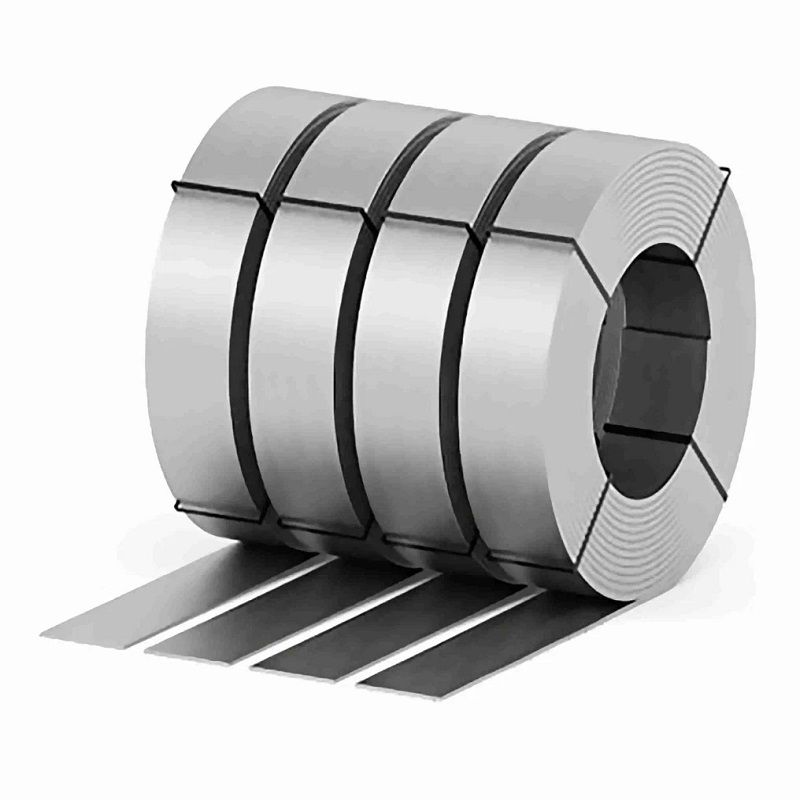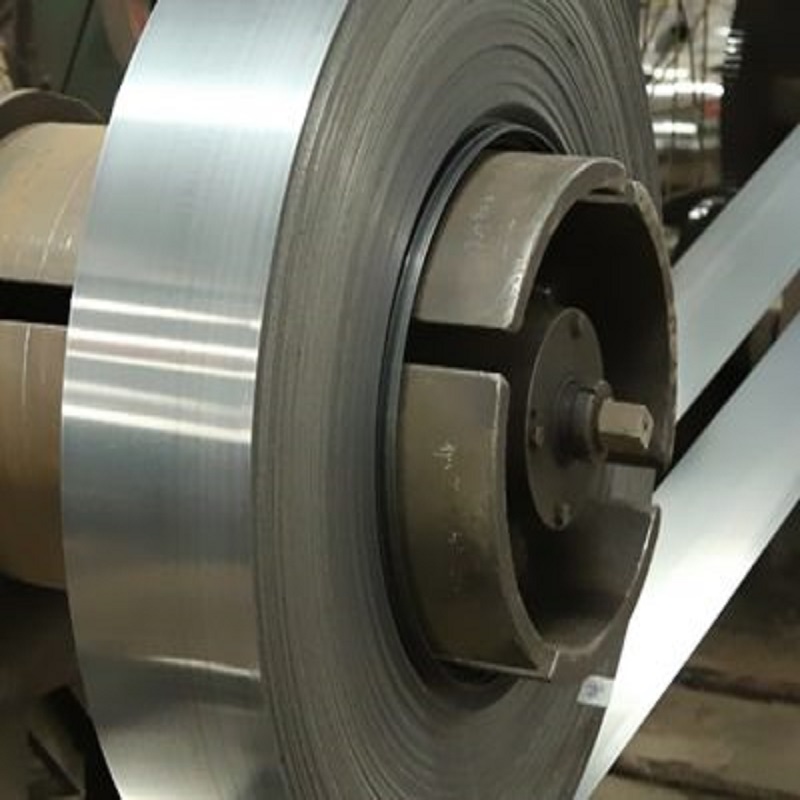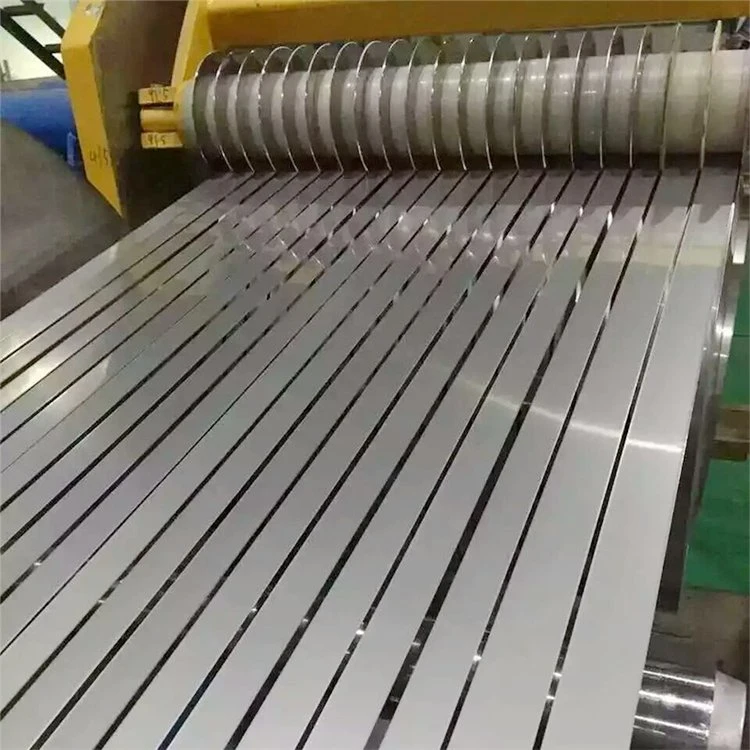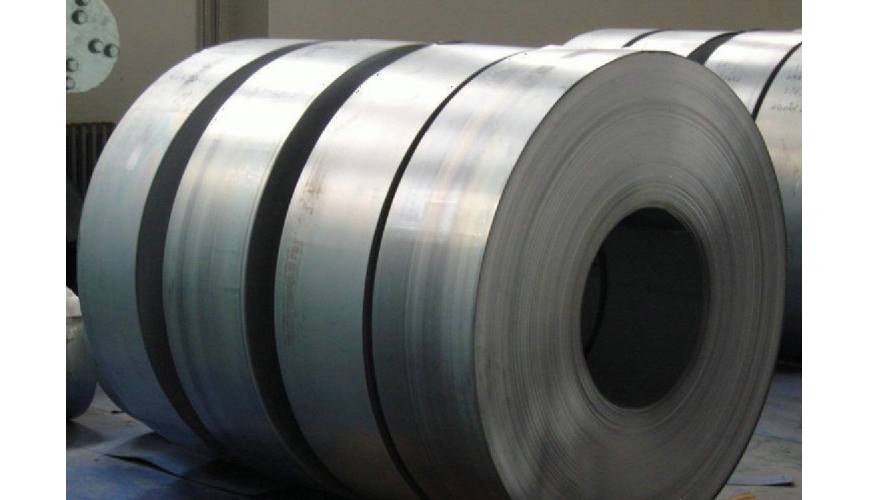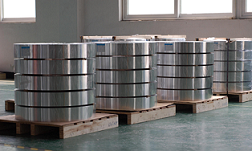Cold Rolled Steel Strip
Cold-rolled strip steel refers to hot-rolled strip steel and steel plates as raw materials, which are rolled into strip steel and thin plates by a cold rolling mill at room temperature.
The general thickness is 0.1~3mm and the width is 100~2000mm. Cold-rolled strips or plates have the advantages of good surface finish, good flatness, high dimensional accuracy, and good mechanical properties.
Products are usually produced in rolls, with a large portion processed into coated steel sheets.
Description:
Cold-rolled strip steel generally has a thickness of 0.2~3mm and a width of 100~2000mm. It uses hot-rolled strip steel as raw material and is rolled by a four-roller or six-roller cold rolling mill at room temperature.
Strip steel with a thickness of less than 0.2mm is called ultra-thin strip steel or foil. It is made of cold-rolled strip steel and is further processed. It is usually rolled by a multi-roller mill.
Since cold-rolled plate and strip steel has various product specifications, high dimensional accuracy, good surface quality, and better mechanical and process properties than hot-rolled strip steel, it is widely used in machinery manufacturing, automobile manufacturing, rolling stock, building structures, aviation Industrial sectors such as rockets, light food, electronic instruments, and household appliances.
Property & Specification:
1. Narrow and thin
2. Precise dimensions
3. Tight tolerances
Material : | Cold-rolled steel strip |
Length : | As customized requested. |
Width & Length Tolerance: | +/-3mm |
Compared with hot-rolled strip, cold-rolled strip has the following advantages:
① Since there is no temperature drop and temperature unevenness in the production of hot-rolled plate and strip during the cold-rolling process, extremely thin strips can be produced with a minimum thickness of 0.001 mm;
② During the cold rolling process, no iron oxide scale is produced on the surface of the rolled piece, and it is pickled before rolling, so the surface quality of the product is good, and various special surfaces can be given to the strip according to requirements, such as rough surface, suede surface or polished surface, etc.;
③Cold-rolled strip steel can meet a wide range of mechanical property requirements through a certain degree of cold rolling deformation and appropriate coordination with relatively simple heat treatment. However, the blanks used in cold-rolled strips are supplied by hot rolling, so their development is affected by hot rolling. Only by continuously improving the quality level of hot-rolled coils, including surface quality, structural properties, thickness tolerance flat shape Degree, etc., can enable better development of cold-rolled strip steel.
Production Process
The cold-rolled strip production process mainly controls billet preparation, pickling, cold rolling, annealing, and finishing.
The blank preparation requires chemical composition, width, and thickness dimensional tolerances (three-point difference and same-line difference), and sickle bends should meet the requirements. The surface should be smooth and clean, and there should be no cracks, folds, delaminations, pores, non-metallic inclusion defects, etc.
Before pickling, the strip steel should be straightened and butt welded to facilitate continuous pickling. Pickling is mainly to remove iron oxide scale. During the pickling process, the concentration and temperature of the acid solution and the ferrous salt content in the acid solution should be controlled.
To control the thickness and plate shape, the reduction, speed, tension, and roll type should be adjusted. The thickness is mainly controlled by AGC, and the plate shape is mainly controlled by adjusting the roll profile (roller crown and crown compensation measures), such as HC, CVC, etc.
Annealing is divided into intermediate annealing and finished annealing. Intermediate annealing is to eliminate work hardening, and product annealing to obtain the required structure and properties. Annealing furnaces include continuous annealing furnaces and bell annealing furnaces. The annealing process of the bell annealing furnace should control the proportion, heating time, and cooling time of the protective gas in the furnace; the annealing process of the continuous annealing furnace should control the temperature, speed, time, and atmosphere according to the annealing curve. Controlling the strip tension in the furnace ensures the plate shape, and controlling the crown of the furnace roller can prevent the strip from deflecting.
Finishing includes smoothing, cutting, oiling, and packaging. Smoothing improves board shape, cleans the surface, and achieves desired performance. The flattening process should control the elongation of the strip, shearing should mainly control the size and surface quality, the oiling should be uniform, and the packaging should meet the specified requirements to facilitate storage, transportation, and delivery.
Packing & Delivery:

